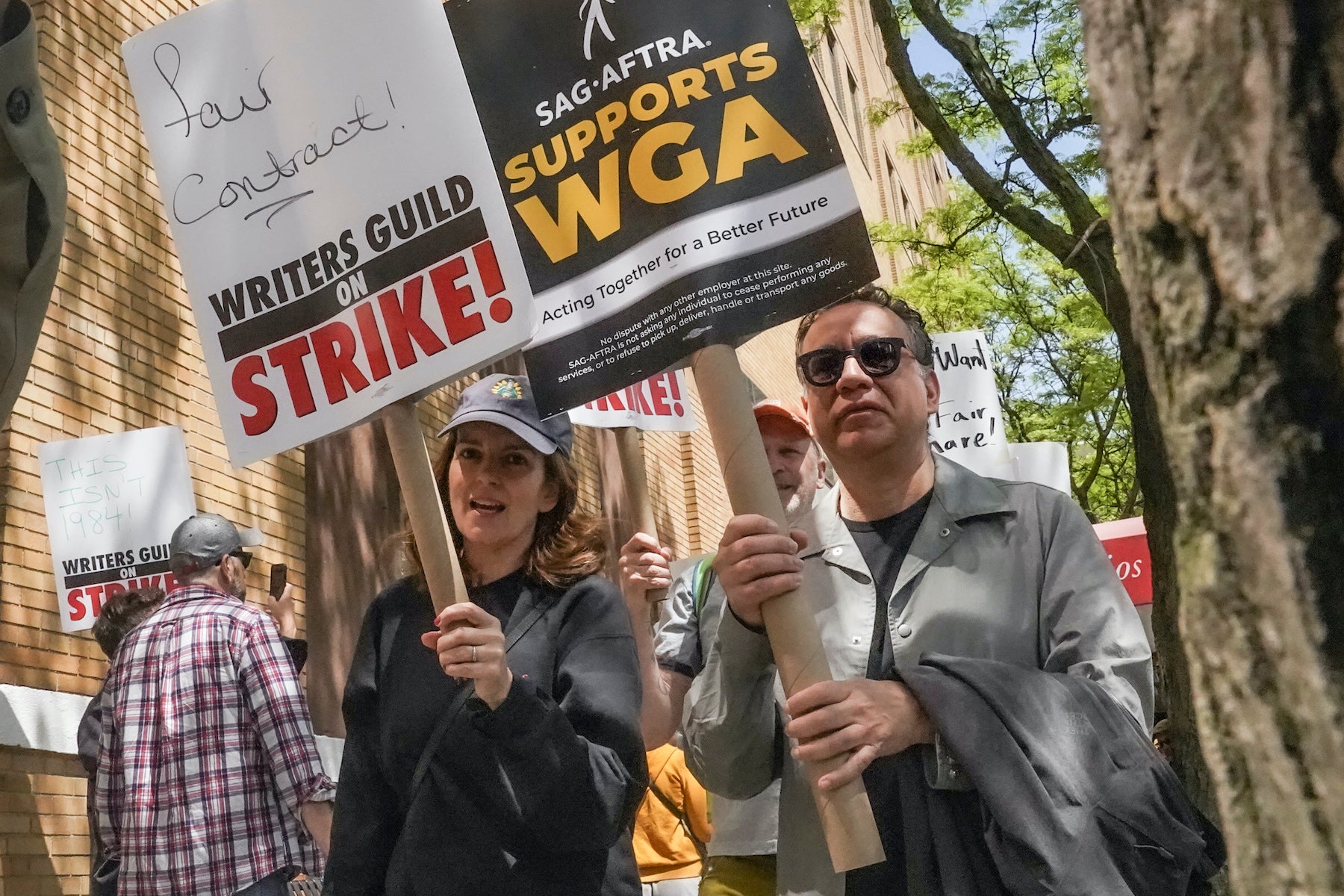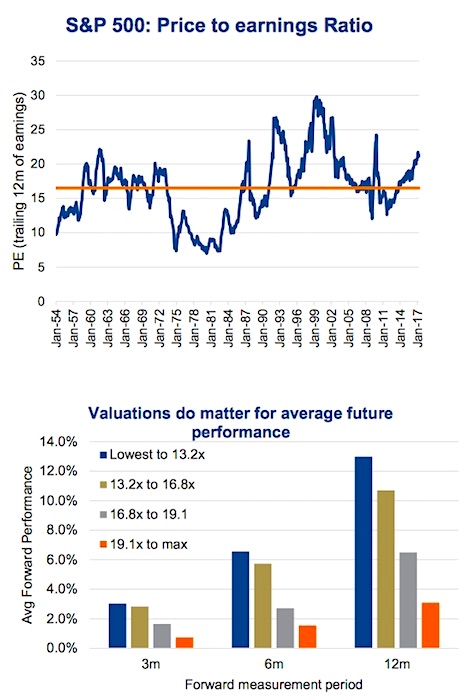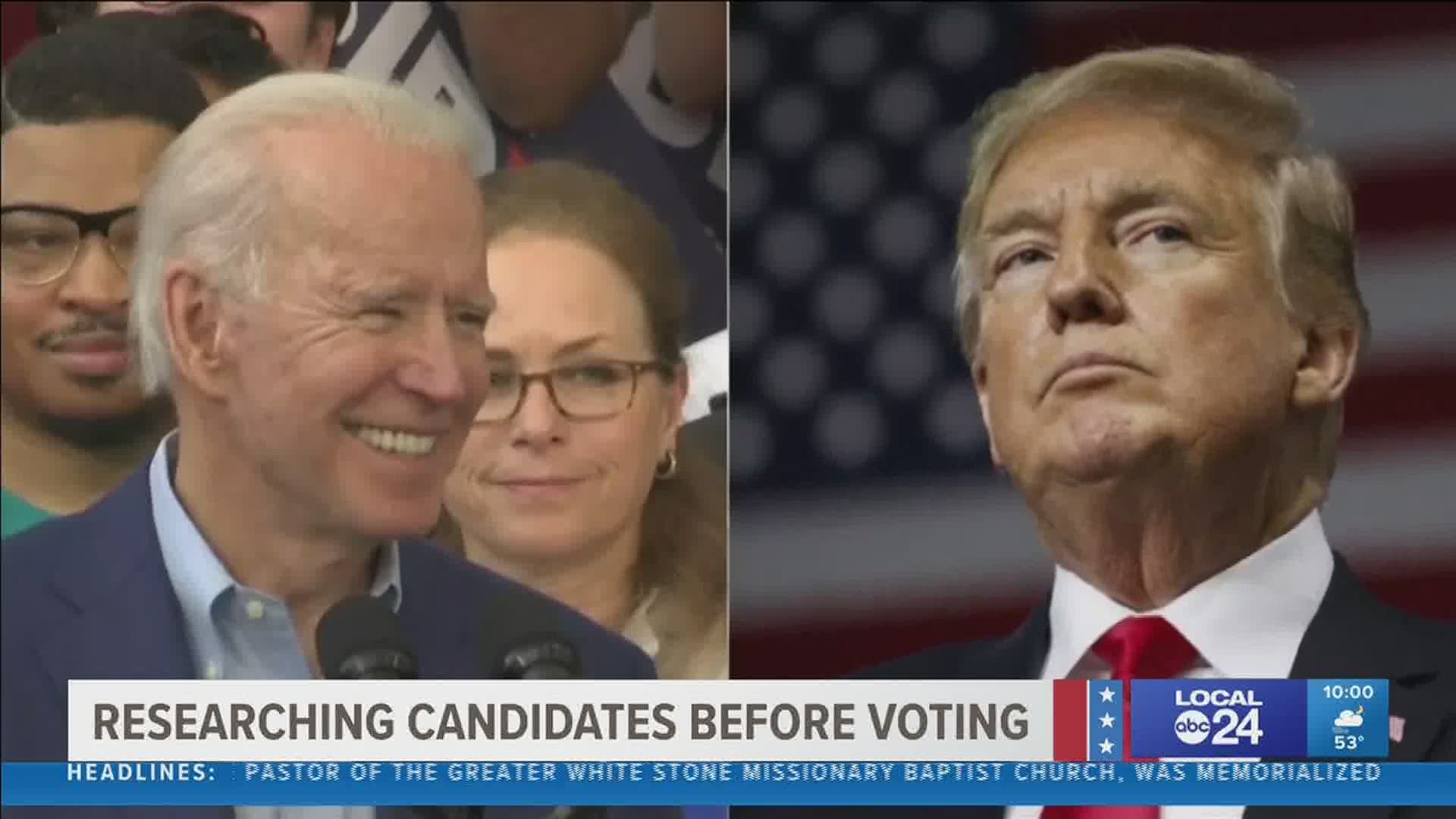Double Trouble In Hollywood: WGA And SAG-AFTRA Strike Brings Industry To Standstill

Table of Contents
The Writers Guild of America (WGA) Strike: Key Demands and Impacts
The WGA strike, which began in May 2023, represents a significant turning point in the relationship between writers and studios. Their core demands center around fair compensation and improved working conditions in the rapidly evolving media landscape.
Fair Compensation and Residuals
The streaming era has drastically altered the way television shows and movies are consumed and compensated. The WGA is fighting for a fairer share of the profits generated by these platforms.
- Demand for increased minimums for writers' salaries: The WGA argues that current minimums are insufficient to meet the rising cost of living in major entertainment hubs.
- Fight for a larger share of streaming revenue: Traditional residuals, a significant source of income for writers in the past, have diminished considerably in the streaming model. The WGA seeks a more equitable system that reflects the massive revenue generated by streaming platforms.
- Addressing the impact of mini-rooms and short-order writing on writers' income: The increasing prevalence of short-order writing and smaller writing teams ("mini-rooms") has resulted in fewer opportunities and lower compensation for many writers.
- Seeking greater transparency in streaming viewership data: The WGA contends that a lack of transparency regarding streaming viewership data makes it difficult to negotiate fair compensation based on actual performance.
Working Conditions and Creative Control
Beyond compensation, the WGA is also addressing concerns about working conditions and creative control.
- Concerns about excessively long working hours: Writers often work grueling hours to meet deadlines, impacting their health and well-being.
- Protecting writers' rights in the face of AI-generated content: The rise of AI writing tools poses a significant threat to writers' jobs and creative control. The WGA seeks safeguards to protect their intellectual property and prevent the exploitation of their work by AI.
- Ensuring fair treatment and respect for writers' contributions: The WGA is advocating for a more respectful and collaborative working environment where writers' contributions are valued and acknowledged.
Impact of the WGA Strike
The effects of the WGA strike are already widespread and far-reaching.
- Delays in production of many television shows: Numerous television series have been indefinitely delayed, leading to gaps in broadcast schedules.
- Postponement of film and television projects: Several film and television projects have been postponed or canceled entirely, impacting the employment of countless individuals.
- Job losses for crew members and other industry professionals: The ripple effect of the strike extends to other industry professionals, including directors, actors, and crew members who rely on the production of these projects for their livelihoods.
The SAG-AFTRA Strike: Joining Forces and Amplifying Demands
Joining the WGA on the picket lines, SAG-AFTRA, the union representing actors, amplified the calls for industry reform. Their demands largely mirror those of the WGA, but also include issues specific to actors.
Fair Wages and Residuals in the Streaming Era
SAG-AFTRA's demands for fair compensation in the streaming era echo the WGA's concerns.
- Demands for increased minimum wages for actors: SAG-AFTRA argues that the current minimum wages for actors are insufficient, especially for those working on low-budget productions or streaming series.
- Addressing the issue of inadequate residuals from streaming platforms: Similar to writers, actors see a significant decrease in residuals from streaming platforms compared to traditional broadcast and cable television.
- Negotiating for fairer contracts concerning the use of AI in the industry: SAG-AFTRA seeks to ensure that actors' likenesses and performances are not exploited by AI without their consent or fair compensation.
Self-Tape Auditions and Working Conditions
SAG-AFTRA also targets the evolving landscape of auditions and working conditions.
- Concerns over the exploitative nature of self-tape auditions: The increasing reliance on self-tape auditions shifts costs and responsibilities onto actors without adequate compensation.
- Seeking better safety regulations on set: SAG-AFTRA is advocating for better safety protocols on film and television sets to protect actors from injury and exploitation.
- Addressing the impact of long working hours and travel expenses: The union seeks to address concerns regarding excessively long working hours and the costs associated with travel for filming locations.
The Combined Impact of Both Strikes
The simultaneous strikes by the WGA and SAG-AFTRA represent an unprecedented level of solidarity and leverage within the entertainment industry.
- Bringing major Hollywood productions to a complete halt: The combined action has brought nearly all major Hollywood productions to a complete standstill.
- Significant economic impact on the entertainment industry: The strike's economic consequences are already being felt, impacting businesses and individuals across the industry.
- Heightened attention to the issues of fair compensation and working conditions: The strikes have drawn considerable public attention to the critical issues of fair compensation and working conditions in Hollywood.
Potential Long-Term Effects of the Hollywood Strike
The Hollywood strike's long-term effects are difficult to predict, but several potential outcomes are foreseeable.
- Potential shifts in the power dynamics between studios and unions: The strikes could lead to a renegotiation of power dynamics between studios and unions, potentially leading to more favorable terms for creative professionals.
- Long-term impacts on television and film production schedules: The delays and cancellations caused by the strikes will have a significant impact on future television and film production schedules.
- Possible changes to compensation models and working conditions: The strikes could lead to significant changes in compensation models and working conditions for writers and actors, benefiting future generations of creatives.
- Potential for increased use of independent films and alternative content creation platforms: The strike might accelerate the growth of independent film production and alternative content creation platforms, offering new avenues for storytellers.
Conclusion
The dual WGA and SAG-AFTRA strikes represent a seismic event in Hollywood, highlighting the critical need for reform in the entertainment industry. The fight for fair wages, residuals, and working conditions in the age of streaming is a crucial battle for the future of creative work. The outcome of these Hollywood strikes will have far-reaching consequences, potentially reshaping the landscape of television and film production for years to come. Staying informed about the ongoing Hollywood strike and its developments is vital to understanding the future of entertainment.

Featured Posts
-
 Navigating High Stock Market Valuations Advice From Bof A
May 10, 2025
Navigating High Stock Market Valuations Advice From Bof A
May 10, 2025 -
 Two Pedestrians Killed In Elizabeth City Road Accident
May 10, 2025
Two Pedestrians Killed In Elizabeth City Road Accident
May 10, 2025 -
 Nl Federal Election Know Your Candidates Before You Vote
May 10, 2025
Nl Federal Election Know Your Candidates Before You Vote
May 10, 2025 -
 Wynne Evans Fights Back Fresh Evidence In Strictly Scandal Case
May 10, 2025
Wynne Evans Fights Back Fresh Evidence In Strictly Scandal Case
May 10, 2025 -
 Harry Styles Reaction To A Failed Snl Impression
May 10, 2025
Harry Styles Reaction To A Failed Snl Impression
May 10, 2025
